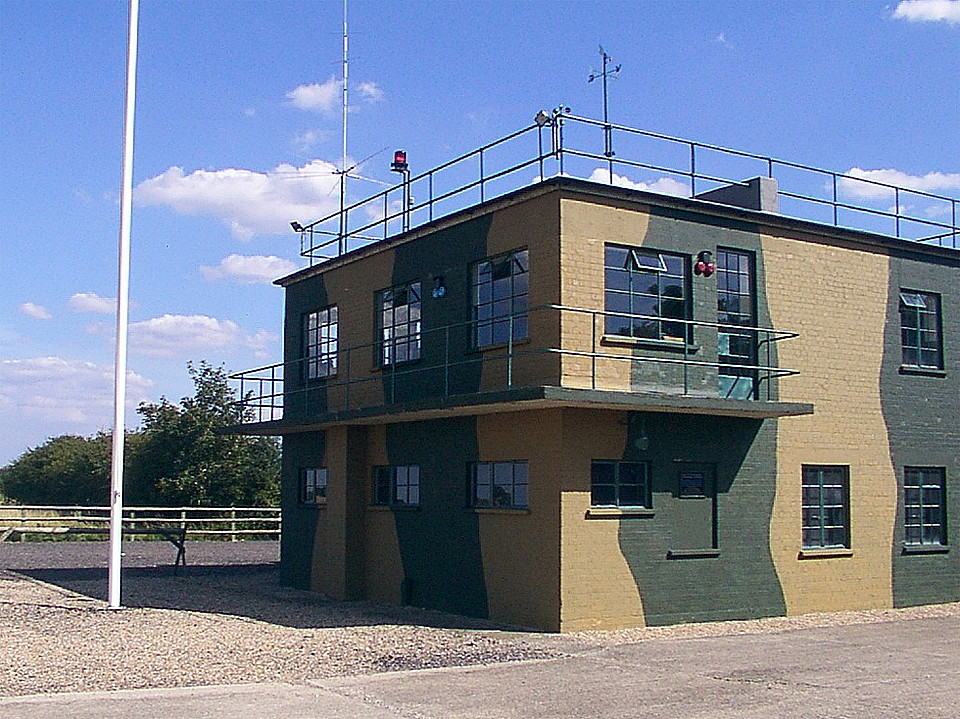Twinwood Farm
TWINWOOD FARM: Military aerodrome
Note: This picture was obtained from Google Earth.
Military user: RAF Fighter Command 12 Group
51 OTU (Bristol Blenheims & Douglas A-20 Turbinelite Havocs)
1942: Army Co-operation Command
169 Sqdn (North American P-51 Mustangs)
371 Repair & Salvage Unit
Gliding: 1970s only?
Location: E of A6, SE of Milton Ernest, 4nm NNW of Bedford
Period of operation: 1941 to 1950s Gliding: 1970s
Runways: 15/33 1463x46 hard 06/24 1280x46 hard
09/27 1006x46 hard
NOTES: This airfield was originally a grass RLG (Relief Landing Ground) when it opened in 1941 and the hard runways weren’t built until 1942.
The Turbinlite Havoc was an ingenious idea that failed in operational conditions apparently used for initial operations from here. Basically the Havoc had a powerful searchlight mounted in the nose. The crew were supposed to locate and pinpoint an enemy intruder by radar, follow it, then illuminate it so that other fighter aircraft could destroy it. The idea, (taken up in 1942?), was given up in 1943, what took them so long? One aspect I have heard about is that if the pilot of the Havoc didn't take suitable precautions prior to the searchlight being switched on, he was in effect blinded - his night vision being obliterated. It must have been very tricky to fly an aircraft onto a target, if you couldn't look at it.
ANOTHER ERA
From 1943 TWINWOOD FARM was included as part of the NAE Establishment expansion programme based on THURLEIGH. Although this apparently didn’t happen, RAF Communications aircraft landed here in the mid 1950s whilst THURLEIGH/RAF BEDFORD was being developed and this aerodrome appeared to be a NAE aerodrome to some extent. Can anybody add to this?
A MYSTERY
There is another detail involving this site well worth mentioning as the whole episode seems shrouded in mystery. The incredibly famous WW2 American band leader Major Glenn Miller departed from here on the 15th December 1944 in a Noorduyn C-64 ‘Norseman’ single-engined type to cross the Channel to Paris and was lost without trace. Who made the decision to fly such a major personality by such dubious means? A search on the internet will reveal much information and many theories.
A MICHAEL T HOLDER GALLERY
We have to thank Mike holder, a great friend of this 'Guide', for looking into the Glen Miller aspect and providing maps and pictures.
THE GLEN MILLER ASPECT
THE WEATHER SITUATION
Mike has also added these items for the weather on the 15th December 1944.
Here again, given all the information available, who exactly gave the order for flying Glen Miller, on that day, in a single-engine aircraft, with one pilot, to Paris? No wonder conspiracy theories abound, but to me, none of it makes any sense.
Given the weather conditions it seems to me obvious that a twin-engine type, with two crew with much experience of flying on instruments, for so much of the time on that flight, was a minimum requirement given such valuable passengers.
SOME MORE ASPECTS OF TWINWOOD FARM
SPOTTERS NOTES
Although mainly listed as a gliding site in the 1970s at least, in 1977 the following GA types were based here: Tipsy B Srs.1 G-AISB of the Cranfield Flying Group, D.H.82A Tiger Moth G-ANOO of the R.A.E. Bedford Aero Club, and G-ASKX, a LET L-13 Blanik glider. In addition the Druine D.62 Condor G-AVJH, Benson B.8 gyroplane G-AXDE (airworthy?), Jodel D.11 G-BAPR of the Crantech Flying Group and the Alpavia Fournier RF-3 G-BCWK. The first question I’d ask is why were people based at and/or working at both CRANFIELD and BEDFORD (THURLEIGH), coming here to do their private flying?
Terry Clark
This comment was written on: 2018-01-13 00:39:54Some reports say the aircraft used by Glenn Miller made a stop at Bovingdon but these cannot be confirmed. When I arrived at Farnborough in 1974, the Flying Order Book contained detailed procedures for the Devons of Transport Flight, which operated twice daily ferries to/from Thurleigh, to make an intemediate stop at Twinwoods Farm. Previously the flight, known generically as the Bedford Ferry, also made a stop at Westcott too.
Ken Moore
This comment was written on: 2021-03-17 17:31:09I was a member of the RAE Gliding Club from 1957 to 1963. You asked why personnel from Cranfield and RAE both flew at Twinwoods. This was close cooperation to the benefit of both clubs. Cranfield students were offered both gliding and powered flying experience as part of their course, which I think took three years. Their problem was that two years was not long enough to train an instructor starting from scratch and while I was a member the Cranfield club had only one glider pilot competent to instruct, though I don't recall him ever doing so, while the RAE club had three instructors and a total membership that never exceeded 20. Also, our chief instructor, Harry Midwood had a PPL and was able to give us aerotows with the Tiger Moth. Cranfield had only one glider, if I recall correctly, a Bocian tandem two-seater, and a two-drum winch, while the RAE Club had a T31 trainer, an Olympia and a one-drum winch, in addition to the Tiger Moth. The pattern of activity was that we took the T31 to Cranfield and flew there during their term with RAE Club members instructing and managing ground activities. Towards the end of my time at RAE Bedford I was doing both of these, although I had only progressed to 2/3 of a Silver C. During Cranfield vacations we returned to Twinwoods, where Cranfield Club members would have been welcome but had usually gone home. After Glenn Miller, two well-known aviators who visited Twinwoods were Bill Bedford, who arrived in a Hurricane after a Battle of Britain commemorative show and gave us a beautiful demonstration of aerobatics within the perimeter of the airfield, and Nick Goodhart.
We'd love to hear from you, so please scroll down to leave a comment!
Leave a comment ...
Copyright (c) UK Airfield Guide






























